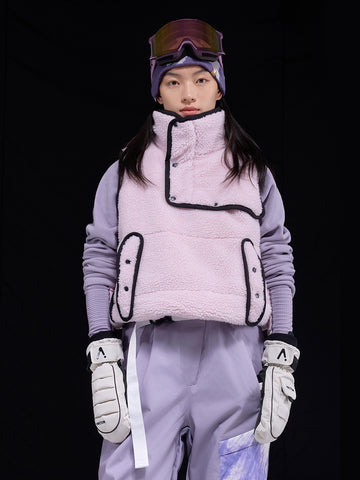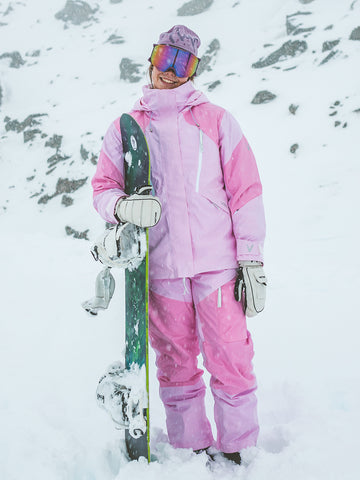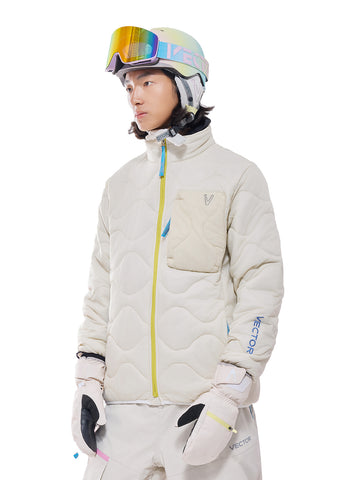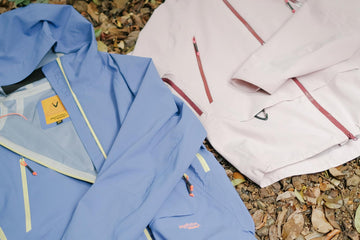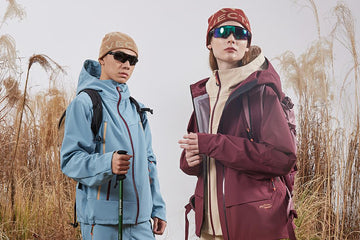Hiking is one of the most popular outdoor activities. In nature, the environment can change rapidly, especially in mountainous regions where the weather is particularly unpredictable. Sudden thunderstorms, heavy snow, and strong winds test our resilience, skills, and gear. Even in warm seasons, heavy rain can occur, and this is even more likely at high altitudes. So, what are the best hiking pants should you wear for hiking? Additionally, a versatile hiking shirt short sleeve can be a great addition to your gear for those warmer days or as a base layer. If you're unsure how to choose the women's hiking jacket, VECTOR MOTION offers a range of clothing recommendations tailored to different weather conditions and temperatures, helping you quickly understand what you need for your hiking adventures.
Here's What We'll Explore:
What to Wear Hiking
Key Features to Consider
Hiking Accessories
What to Wear Hiking
When hiking, it's essential to wear comfortable, moisture-wicking clothing suitable for the weather conditions to ensure your comfort and safety. Let's take a look at some clothing options you can wear while hiking.
Windbreaker jacket: During summer hikes, strong winds are more likely to occur at the summit or along ridges, so we often opt for a windbreaker jacket. A windbreaker, known for its windproof, waterproof, and breathable features, is a staple for many outdoor enthusiasts. It is typically designed with a hood to prevent rain from entering through the neck, as well as to protect the neck and head.
Rain jacket: When hiking in the mountains, weather conditions can change suddenly and unexpectedly. In such scenarios, having a rain jacket becomes essential. Opt for a jacket that's both waterproof and breathable. It keeps you dry and warm, allowing you to continue your hike comfortably without the risk of hypothermia or other weather-related issues. When hiking deep in the mountains or in cooler conditions, opt for a hardshell rain jacket. With its waterproof, windproof, and breathable features, it keeps you dry and comfortable in harsh weather. We recommend the VECTOR MOTION Zenith 3L Hardshell Rain Jacket.
3-in-1 Jacket: Comprising an outer shell and a detachable inner layer, 3-in-1 jackets can be worn together or separately. They offer versatility: wear just the outer shell in mild conditions, add the inner layer when temperatures drop, or wear the inner layer alone in warm, dry weather.
Tee: In summer, when temperatures soar and humidity is high, outdoor activities often lead to heavy sweating. It's crucial to wear a moisture-wicking T-shirt as a base layer to keep skin and clothing dry. VECTOR's Quick Dry Easy-Care Stripe Tee, made with SORONA AGILE for durable stretch and moisture-wicking technology, efficiently moves sweat away from the skin to the outer fabric surface.

Vest: Wearing a vest during summer hikes can help you stay cool and comfortable. Opt for a vest made of moisture-wicking material to quickly wick away sweat, prevent overheating, and provide essential ventilation, keeping you refreshed in hot weather.

Long Sleeve Top: Wearing a long-sleeve top for hiking can effectively protect you from the sun, reducing UV damage to your skin, and preventing insect bites. It also helps avoid scratches from branches in forests and provides warmth in environments with significant temperature variations.
Ridge Parachute Pants: When hiking, it's beneficial to choose loose-fitting pants like the Ridge Parachute Pants to adapt to winding and uneven mountain trails. They provide greater comfort and flexibility, allowing for freer movement. Additionally, these pants offer better ventilation, preventing overheating, especially during extended hikes.
Convertible Pants: Choosing convertible pants for hiking enhances flexibility and comfort, allowing you to better adapt to changing trail conditions. When crossing rivers, you can convert pants into shorts to avoid getting them wet, and switch back to pants in forests to prevent scratches and insect bites. One pair of convertible pants can replace both long pants and shorts, reducing the amount of clothing you need to carry.
2-in-1 Wrap Skirt: For spring and summer hiking, opting for a 2-in-1 wrap skirt is versatile as it can be worn as both pants and a skirt, suitable for any occasion. It folds easily for compact storage, making it convenient for outdoor activities.
Key Features to Consider
Waterproof: The primary function provided by outdoor clothing is waterproofing, with most traditional outdoor garments using fabric treatments like coatings or membranes for waterproofing.
Windproof: Choosing windproof fabrics for hiking provides effective wind resistance, enhancing warmth and comfort, particularly suitable for cold or windy environments to protect the body from cold and discomfort.
Breathable: A good outdoor garment not only needs to be waterproof but also requires good breathability, which is determined by the microporous structure of the membrane allowing water vapor to escape while blocking liquid water molecules from entering. The breathability of the fabric directly affects the comfort and performance of the garment. Fabrics with high breathability are suitable for summer clothing, while winter outerwear should use fabrics with lower breathability to ensure good windproof performance and prevent heat loss.
Sun protection: When hiking, selecting fabrics with sun protection is crucial for minimizing exposure to harmful UV rays, thus reducing the risk of sunburn and skin cancer. Opting for UPF 50+ sun protection is ideal, particularly in high-altitude or intense sunlight conditions.
Hiking Accessories
Cap: When hiking, choosing a cap helps to shield from sunlight, protecting the face and eyes from direct exposure to strong rays. For instance, wearing a cap during hikes in high-altitude areas reduces eye strain and safeguards the skin from sun damage, enhancing overall comfort.

Sunglasses: Sunglasses provide essential protection against harmful UV rays and offer shielding during windy conditions. They enhance eye safety by reducing glare and ensuring comfort in varied weather while maintaining clear vision.
Socks: When hiking, choosing the right socks is crucial for providing support, protection against friction, and reducing the risk of blisters. For example, opting for specialized hiking socks enhances comfort, minimizes foot fatigue and abrasion during long treks, ensuring stability and an enjoyable hiking experience.

Beanie: When hiking, opting for a beanie made with wool provides superior warmth and comfort, making it ideal for cold or chilly weather conditions.
Summary
Choosing the right hiking attire can ensure a comfortable and enjoyable trek. To make your hike pleasant, it is crucial to select outdoor gear that suits your specific plans and conditions. Ensure you're equipped with the right attire for a safe and enjoyable adventure. By choosing the appropriate clothing and gear tailored to your hiking conditions, you can maximize comfort and focus on the breathtaking landscapes and experiences that nature offers. Happy trails!
FAQ
Q: What clothing should you wear when hiking?
A: Depending on the temperature, you should adjust your hiking clothing accordingly. For warmer temperatures, you can choose to wear moisture-wicking base layers and a waterproof outer layer.
Q: What is the dress code for hiking?
A: Prioritize comfort and functionality with breathable, moisture-wicking fabrics. Dress in layers and wear appropriate footwear for the terrain.
Q: Is it better to wear shorts or pants when hiking?
A: Wear shorts in hot weather for better ventilation. Opt for pants in cooler or rugged terrain for more protection.
References:
https://www.rei.com/learn/expert-advice/how-to-choose-hiking-clothes.html
https://www.backpacker.com/skills/hiking-outfit-how-to-pick/
https://www.usatoday.com/story/life/wellness/2023/08/07/what-to-wear-hiking/70415906007/
https://www.ridestore.com/mag/what-to-wear-hiking/
https://www.thenorthface.co.uk/help-section/faq/what-to-wear-hiking.html



